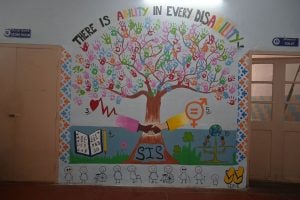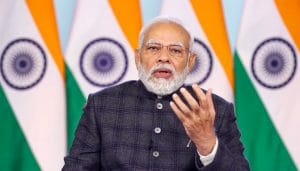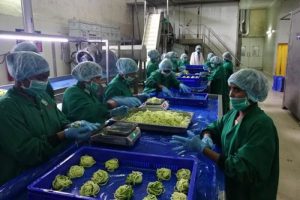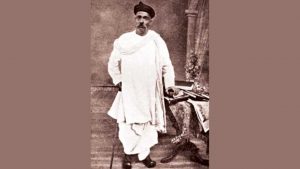Changing India | Here’s how APD and AMBA are transforming lives of the differently abled
Summary
Two NGOs — Association of People With Disabilities and AMBA — are giving hope to the disabled from poorest backgrounds in rural India and empowering them for the future.
In a nation where over 26.8 million individuals live with disabilities, the journey towards inclusivity and independence is laden with challenges. Moreso because most of these cases are in rural India with little access to proper healthcare and special education.
Disability is a taboo and stigma in rural India and that makes the journey more challenging. Yet, some organisations are making groundbreaking strides in transforming the narrative for India’s disabled community.
From early intervention to vocational training, these entities are not merely assisting but are truly empowering individuals to lead lives of dignity and independence. From empowering differently abled people to win medals in different sports to rehabilitating them to take up regular jobs, the organisations are truly changing India in the true sense.

At the forefront of this transformative journey is Association of People With Disabilities, a Bangalore-based organisation established in 1987, which has impacted over 284,176 lives specifically in the rural and poor socio-economic backgrounds.
APD believes that for those who are born with disabilities, targeting one phase or one challenge of disability with monetary support is not enough. For decades, we have seen that disability rehabilitation has been seen as a medical intervention issue, but APD thinks and does more. It follows a life-cycle approach which addresses every aspect of disability care—from early intervention in infants to vocational training for adults. From giving therapies to children with disabilities to getting them admitted in an inclusive school and then to train them to pick up respectable jobs as adults.
Shaurya’s transformation
4-year old Shaurya, is dealing with developmental delays and autism. The biggest challenge for families with these kids is early intervention and acceptance. Shaurya was brought to APD as a two year-old. His mother recalls that she was scared when she got to know about Shaurya’s delay and autism. She had no idea what to do other than taking him to a doctor.
Two years later, Shaurya has started enjoying coming to the APD play school where he is taught various cognitive skills. His mother has been able to deal with the child better. “APD teachers taught me how to deal with him, using flash cards so that the child can communicate his needs, by touch etc. Now after coming here, he has gotten adjusted to sounds and he also makes sounds so he is learning verbal communication also,” says Prashanti, Shaurya’s mother.
Inclusive approach
The organisation’s suite of services is expansive, offering therapies like hydro-therapy and sensory integration to cater to various disabilities. At the heart of these efforts is the Shradhanjali Integrated School, a model of educational inclusivity, where children with various disabilities, like Cerebral Palsy, blindness, verbal disabilities and limb dysfunctions, find not only education but also a nurturing space to grow and dream. The kids are taught using audio-visual methods to cater to even low-cognitive abilities. Sign language is also used as a mode of teaching, often by teachers who face some kind of disability themselves.

However, the challenges extend beyond the physical. India’s 1.5 million spinal cord injury survivors face immense hurdles, from healthcare access to societal integration. APD’s “cot-to-community” approach is a beacon of hope, focusing on rehabilitation and sustainable livelihoods. The organisation’s efforts are a lifeline, offering not just medical care but a path to self-sufficiency and dignity.
The story of 29-Year old Murthy Naveen Babu, a spinal cord injury survivor turned archer and peer trainer is a perfect example of how these organisations are changing the narrative of disability. Naveen’s journey from a traumatic accident to becoming a national-level archery medalist exemplifies the potent blend of personal resilience and supportive rehabilitation.
Even on a wheelchair, Naveen has not only aced the sport of archery, but also swimming with just his upper body. Naveen uses public transport like auto, bus and train from Bangalore to Andhra Pradesh, to visit his family once every month. He has been trained in using his wheelchair as part of his body and he says he has never felt this confident after the accident.
Leveraging technology
But the movement towards inclusivity doesn’t stop with physical disabilities. NGOs like AMBA are revolutionising the prospects for individuals with intellectual disabilities, leveraging technology to enable them to perform complex tasks like back-office data entry. This initiative is not just about providing jobs; it’s about challenging and changing societal perceptions, demonstrating that with the right tools and opportunities, individuals with intellectual disabilities can contribute meaningfully to society.
“The 30% of the disabled community that we serve have had no opportunity whatsoever. They have been born with a stigma and we had to find a way to help them and the only way I could see that happening was through technology. Our aim is to target rural India with more focus.
So today what AMBA has done is that we use technology and we have created a copyrighted curriculum which works around pattern recognition and enables these young people with intellectual disabilities to do back-end work for companies,” says Sugandha Rituraj, founder, AMBA.
The work these organisations are doing is revolutionising the way society perceives and supports the disabled. Their comprehensive approaches, focusing on everything from early intervention to vocational training, are setting new standards in disability care and rehabilitation.

Elon Musk forms several ‘X Holdings’ companies to fund potential Twitter buyout
3 Mins Read
Thursday’s filing dispelled some doubts, though Musk still has work to do. He and his advisers will spend the coming days vetting potential investors for the equity portion of his offer, according to people familiar with the matter









 Listen to the Article
Listen to the Article  Daily Newsletter
Daily Newsletter






 Source: AMPD Research, MPA Analysis
Source: AMPD Research, MPA Analysis








